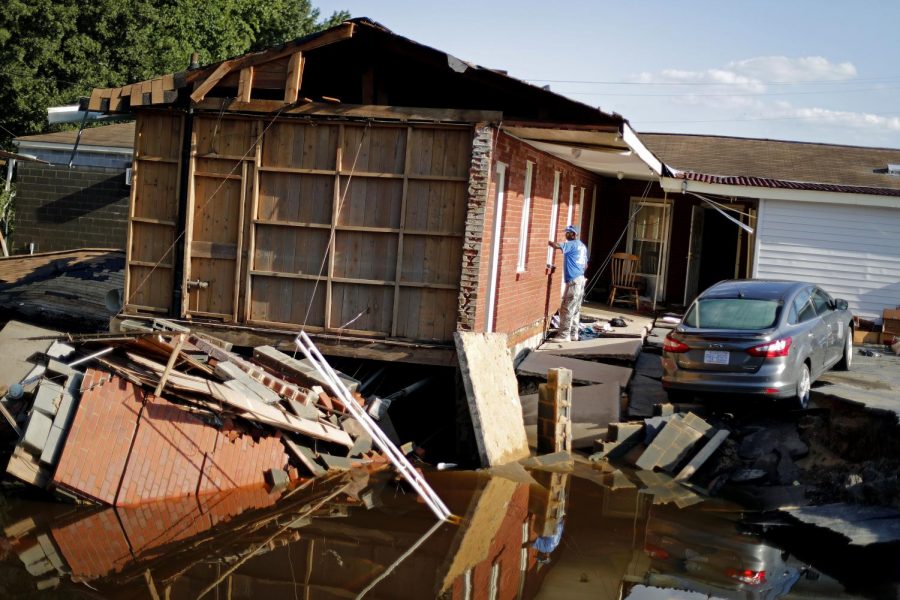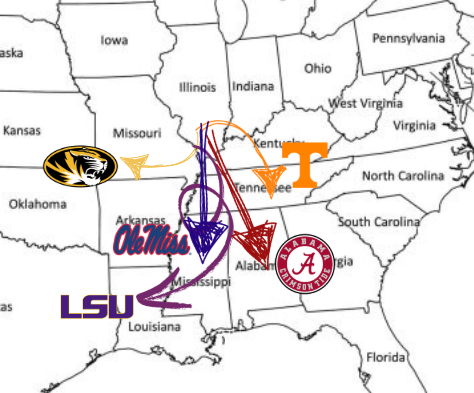Florence Continues to Flood the U.S.
One of many structures devastated by Hurricane Florence stands now as wreckage.
September 20, 2018
After hitting the U.S. as a category one hurricane, Florence has been downgraded to a tropical depression—but the storm isn’t over yet.
More than 1 million people were under mandatory evacuation orders as the storm approached the U.S., CNN reported. Now, at least 17 people have died, and almost 1 million more are left without power, according to National Geographic.
Florence will continue to move north with flooding as the major concern. Parts of Cape Fear, Little, Neuse, and Rocky rivers in the Carolinas are already in the “‘major flooding’ stage and rising” according to The New York Times.
In an advisory released Monday, the National Hurricane Center called for flash flood warning across central North Carolina, which has already received as high as 30 inches of rain in some parts.
When the storm’s warm air mixes with currents off the Appalachian Mountains, Florence has the potential to drop even more rain, NOAA hurricane support meteorologist Joel Cline told National Geographic. The east coast is not the only place in harm’s way; potentially, the rain could move far inland, causing mudslides.
However, rainfall in the Midwest is set to remain at or below average.
“Florence is the big weather story here in the U.S., and it’s actually going to indirectly impact the Midwest by keeping a frontal boundary at bay later this week,” senior meteorologist Robert Miller of AccuWeather said, referring to the high-pressure dome keeping the storm away.
Many airports in the East have closed their runways until the storm dissipates, causing people all over the country to have to change flight plans.
As for road travel, the North Carolina state transportation department is advising people to not travel in the state, according to CNN. Highways I-95 and I-40 have already closed in sections due to flooding.












